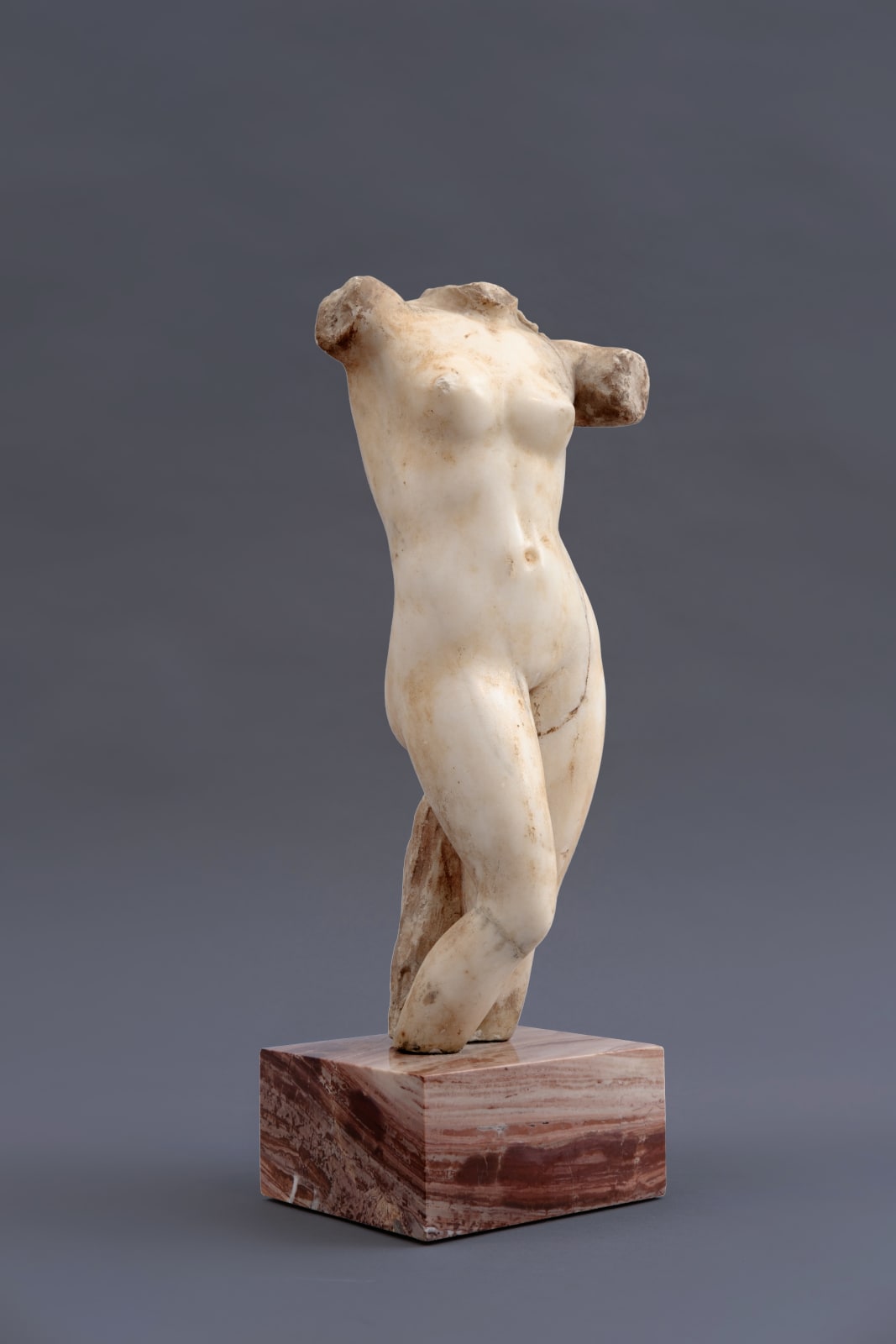*APHRODITE, Roman Empire, circa II Century A.D.
marble
height 37 cm
height 14 1/2 in
*Please note: this item is only for the Italian market
height 14 1/2 in
*Please note: this item is only for the Italian market
The present female figure represents the goddess Aphrodite caught in the act of fixing her long hair. The artwork is based on the Hellenistic prototype known as 'Aphrodite Anadyomene', from...
The present female figure represents the goddess Aphrodite caught in the act of fixing her long hair. The artwork is based on the Hellenistic prototype known as "Aphrodite Anadyomene", from the ancient Greek "rising from the sea". This prototype derives from a lost Hellenistic painting by the Greek painter Apelles, thoroughly described in literature, first by Pliny the Elder.
Aphrodite, naked, is shown drying herself after being born as an adult from the sea off the coast of Cyprus. The work comes to us headless, preserving part of the shoulders, arms and legs up to the calves. The goddess is portrayed leaning with her weight on her left leg, with her left hip resting on a log-shaped support. The locks of wet hair on the shoulders are pleasantly preserved.
Known during the Roman Empire since the time of Julius Caesar, the "Aphrodite Anadyomene" has been portrayed countless times, both in antiquity (see the well-known fresco in Pompeii), but also during the Renaissance by Italian painters such as Sandro Botticelli and Titian, and throughout the centuries.
Aphrodite, naked, is shown drying herself after being born as an adult from the sea off the coast of Cyprus. The work comes to us headless, preserving part of the shoulders, arms and legs up to the calves. The goddess is portrayed leaning with her weight on her left leg, with her left hip resting on a log-shaped support. The locks of wet hair on the shoulders are pleasantly preserved.
Known during the Roman Empire since the time of Julius Caesar, the "Aphrodite Anadyomene" has been portrayed countless times, both in antiquity (see the well-known fresco in Pompeii), but also during the Renaissance by Italian painters such as Sandro Botticelli and Titian, and throughout the centuries.
3
di
3




